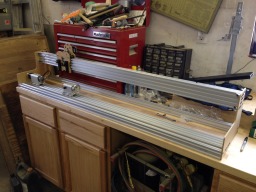Rotary Axis OX Derivitive
Discussion in 'CNC Lathes' started by dougsnash, Dec 7, 2014.
Rotary Axis OX Derivitive
Discussion in 'CNC Lathes' started by dougsnash, Dec 7, 2014.
A Rotary Axis CNC router based on the OX CNC Router
Page 1 of 2
Page 1 of 2

